NELSON Mandela, the greatest statesman South Africa has ever seen, has been buried on a gentle Qunu hillside overlooking his home. His dignified, emotional funeral last Sunday at which both family and luminaries spoke of his legacy and towering personality, was a fitting farewell to a global hero of which South Africa shall remain proud for many generations to come.
As life slowly returns to normal, and South Africans head to their festive season vacation, there will be ample opportunity to reflect upon the 10 days that spanned the announcement of his death and his funeral. Of particular interest is the design of the entire programme and the meaning of some of the decisions made.
It was clear from the beginning that the government had prepared a plan well in advance. Members of the Gauteng public had many opportunities to pay tribute to their beloved Madiba, at his Houghton home, at Vilakazi Street in Orlando West, the government memorial service at FNB Stadium, and over the three days during which his body lay in state at the Union Buildings.
Of the large public gatherings the least remarkable was the FNB event. Not only was President Zuma jeered by large sections of the crowd, the speaker line-up appeared constructed to give pride of place to our Brics (Brazil, Russia, India, China, South Africa) partners. Only Russia didn’t send a speaker. Neither its president nor deputy could make the trip.
So naked an appeal to material interests seemed horribly out of place in an event meant to pay homage to a life that touched many others at a human level.
It was left to US President Barack Obama’s riveting eulogy to rescue what was becoming an unremarkable, damp event ill-fitting of the stature of the man it was meant to honour. Curiously, there has also been no official role for Thabo Mbeki, Mandela’s deputy president and successor. Their relationship might have been complicated at times but the two did appear to reconcile over the years, with Mbeki delivering a tour de force of a speech in honour of Mandela in 2004.
This omission also left a sour taste as it appeared to have more to do with petty African National Congress (ANC) factional politics than working out an appropriate programme to honour South Africa’s favourite son. It is impossible to tell the story of Mandela’s presidency without mentioning his right-hand man and successor, but this the government tried to do nonetheless, and failed as Mbeki was cheered by the FNB crowd despite his relegation to a mere observer.
Questions will also linger about the exclusion from the funeral of Qunu villagers, the people Mandela always longed to spend his days with after his retirement. For someone who was so open to his community and often walked among them or invited them to his home, the decision is a bizarre contradiction. Instead, some of the guests included television actors and other people with little or no connection to the place or to Mandela himself.
Despite these glitches, overall the government deserves credit for successfully managing what must have been a logistical and protocol nightmare as numerous global leaders and other luminaries wanted to pay their respects. Ministers were involved in various aspects of the programme, and the integration of the ANC into the programme was subtle enough not to be vulgar.
Cyril Ramaphosa was appropriate as master of ceremonies. He is another of Mandela’s post-prison proteges and had managed the process of ushering in a new constitution. His co-host at the memorial and funeral, ANC chair Baleka Mbete was not the best of MCs and was probably not needed at all.
The unveiling of a 9m statue of Madiba at the Union Buildings on Reconciliation Day was a fitting end to what has been an emotionally draining period for the country.
-
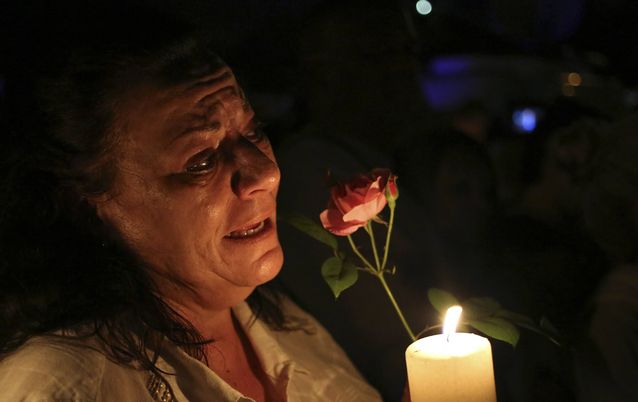
MOURNING: A women cries as she holds a candle and a flower outside former South African president Nelson Mandela's house in Houghton, Johannesburg, after the announcement of his death on Thursday December 5. Picture: REUTERS
-
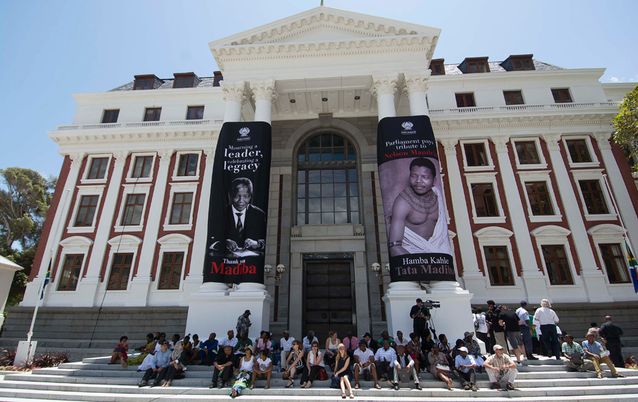
Large banners display the image of Nelson Mandela outside Parliament on Monday December 9 2013 . Picture: TREVOR SAMSON
-
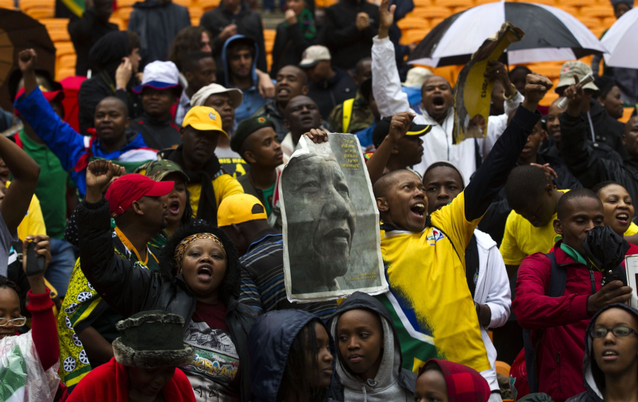
People sing and dance at the official memorial service for former president Nelson Mandela at FNB Stadium in Johannesburg on Tuesday December 10 2013. Picture: REUTERS
-
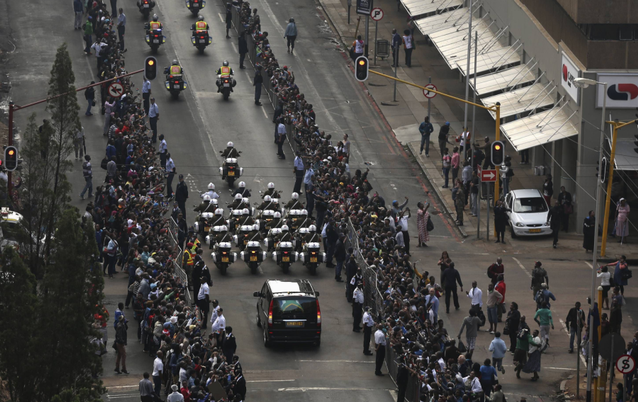
Military outriders escort the funeral cortege carrying the coffin of former president Nelson Mandela on its way to the Union Buildings in Pretoria on Wednesday December 11 2013. Picture: REUTERS
-
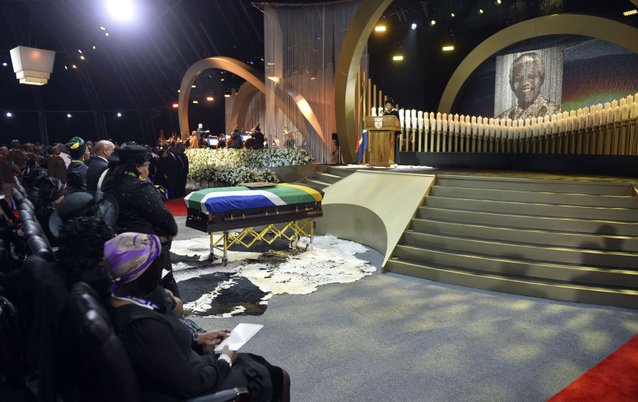
The coffin of former president Nelson Mandela is seen during his funeral ceremony in Qunu on Sunday December 15 2013. Picture: REUTERS
-
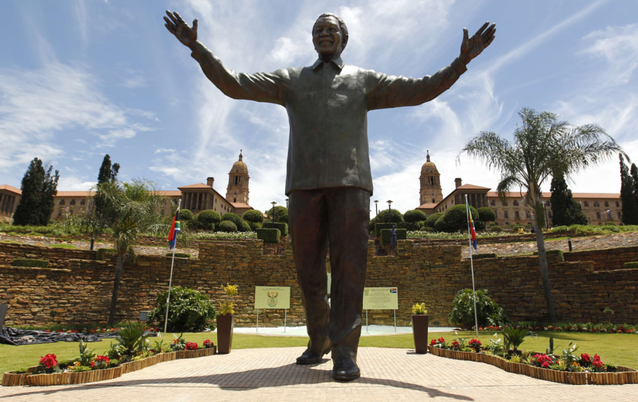
A bronze statue of former president Nelson Mandela at the Union Buildings in Pretoria. File picture: REUTERS
NELSON Mandela, the greatest statesman South Africa has ever seen, has been buried on a gentle Qunu hillside overlooking his home. His dignified, emotional funeral last Sunday at which both family and luminaries spoke of his legacy and towering personality, was a fitting farewell to a global hero of which South Africa shall remain proud for many generations to come.
As life slowly returns to normal, and South Africans head to their festive season vacation, there will be ample opportunity to reflect upon the 10 days that spanned the announcement of his death and his funeral. Of particular interest is the design of the entire programme and the meaning of some of the decisions made.
It was clear from the beginning that the government had prepared a plan well in advance. Members of the Gauteng public had many opportunities to pay tribute to their beloved Madiba, at his Houghton home, at Vilakazi Street in Orlando West, the government memorial service at FNB Stadium, and over the three days during which his body lay in state at the Union Buildings.
Of the large public gatherings the least remarkable was the FNB event. Not only was President Zuma jeered by large sections of the crowd, the speaker line-up appeared constructed to give pride of place to our Brics (Brazil, Russia, India, China, South Africa) partners. Only Russia didn’t send a speaker. Neither its president nor deputy could make the trip.
So naked an appeal to material interests seemed horribly out of place in an event meant to pay homage to a life that touched many others at a human level.
It was left to US President Barack Obama’s riveting eulogy to rescue what was becoming an unremarkable, damp event ill-fitting of the stature of the man it was meant to honour. Curiously, there has also been no official role for Thabo Mbeki, Mandela’s deputy president and successor. Their relationship might have been complicated at times but the two did appear to reconcile over the years, with Mbeki delivering a tour de force of a speech in honour of Mandela in 2004.
This omission also left a sour taste as it appeared to have more to do with petty African National Congress (ANC) factional politics than working out an appropriate programme to honour South Africa’s favourite son. It is impossible to tell the story of Mandela’s presidency without mentioning his right-hand man and successor, but this the government tried to do nonetheless, and failed as Mbeki was cheered by the FNB crowd despite his relegation to a mere observer.
Questions will also linger about the exclusion from the funeral of Qunu villagers, the people Mandela always longed to spend his days with after his retirement. For someone who was so open to his community and often walked among them or invited them to his home, the decision is a bizarre contradiction. Instead, some of the guests included television actors and other people with little or no connection to the place or to Mandela himself.
Despite these glitches, overall the government deserves credit for successfully managing what must have been a logistical and protocol nightmare as numerous global leaders and other luminaries wanted to pay their respects. Ministers were involved in various aspects of the programme, and the integration of the ANC into the programme was subtle enough not to be vulgar.
Cyril Ramaphosa was appropriate as master of ceremonies. He is another of Mandela’s post-prison proteges and had managed the process of ushering in a new constitution. His co-host at the memorial and funeral, ANC chair Baleka Mbete was not the best of MCs and was probably not needed at all.
The unveiling of a 9m statue of Madiba at the Union Buildings on Reconciliation Day was a fitting end to what has been an emotionally draining period for the country.



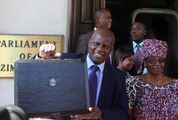
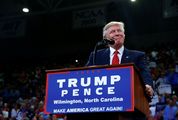
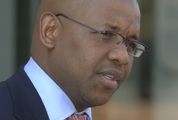






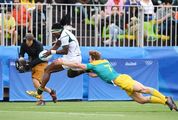

 News and views on the death, and life, of former president Nelson Mandela, with tributes and photographs
News and views on the death, and life, of former president Nelson Mandela, with tributes and photographs




















